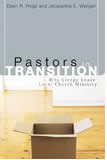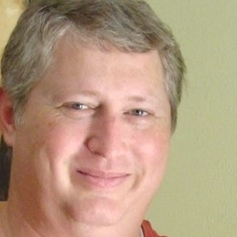One of the topics we really enjoy discussing here at MMI is innovation. How are people and churches innovatively sharing the gospel? That's what you'll find here... innovative church practices in church planting, emerging churches, megachurches, and multi-site churches. We even have a section about innovation in small churches.
What are We to Make of Mega-Church Foreclosures?
What are the common links here? It seems to me that these megachurches cited are not the typical megachurches, but those that are currently enveloped in some type of scandal. All three involve blatent and public sin of the leaders.
The narrator says that mega-churches are 'one scandal away from forclosure'. My question: Isn't this the case with every church, though? If the pastor of a 200 member church openly sins, let's say he punches his wife in the local Wal-mart parking lot, or if he divorces his wife, does that not put the church in danger of having many people leave? And if people leave and offerings plummet, that 200 member church is in the same boat as the 20,000 member church. My theory is that this is more of a problem of theology rather than size. Most of the larger churches that have had huge breakdowns over the past year are the more pentecostal word-of-faith churches (no offense to my pentecostal friends). I see more similarities there than I do with church size.
What think thee?
 Mega-Church Pictorial
Mega-Church Pictorial
Joe Johnson, from Columbia, MO is a photographer with a love of 'mega-church' photography. Seriously, he has taken some great shots of mega-church facilities across the country that you can view at his website. Unfortunately, all of his photos are tagged with the city, but not the name of the church. For instance, this church (in the picture) has a 'plasma pulpit'. Honestly can't say that I've seen one of these before!
In an interview at FeatureShoot.com, Joe says: "It was physical and wholly alien from what my idea of organized worship had been. Christian iconography was either stylized into abstract obscurity or altogether absent. The subject had tension. It was visual, topical, and coolly secular. Once I realized that I had relocated to a part of the country where big- box mega churches seemed to sprout forth weekly along the highways of Midwestern ex-urbs, my new project was immediately clear. So I began to search the internet for churches within driving distance that had a weekly attendance of at least 2000 people and I called their public relations representatives. It was easier to gain access than I had expected and once I’d exhausted the possibilities within a two hour drive of my home, I began to organize multi-state driving trips’..."

 Jim Tomberlin: Multi-Site Church Trends for 2009
Jim Tomberlin works with tons of multi-site churches as part of his Third Quarter Consulting practice. In a recent newsletter, Jim shared some of the trends he's seeing in the multi-site world, and some of the things you should watch for in 2009. These are very interesting. Multi-site ministry is really changing the landscape of what many churches look like. Here is Jim's list of what 2009 may bring...
New Mega-Church Study Finds Some Interesting Results
Jim Tomberlin: Multi-Site Church Trends for 2009
Jim Tomberlin works with tons of multi-site churches as part of his Third Quarter Consulting practice. In a recent newsletter, Jim shared some of the trends he's seeing in the multi-site world, and some of the things you should watch for in 2009. These are very interesting. Multi-site ministry is really changing the landscape of what many churches look like. Here is Jim's list of what 2009 may bring...
New Mega-Church Study Finds Some Interesting Results
A new study by Leadership Network and Hartford Seminary's Hartford Institute for Religion Research shows that U. S. megachurches continue to strengthen their foothold in the American religious landscape. According to the study, megachurches are having huge impact in all kinds of areas of church life, including: Christian education literature, worship resources and music materials; pastor-training conferences; planting new congregations and spinning off affiliated satellite locations; and hands-on mission trips. Here are more really interesting findings from the study...
 Multi-Site Church Smackdown: Surratt vs. Stetzer
Multi-Site Church Smackdown: Surratt vs. Stetzer
It all started with an article written by Ed Stetzer about multi-site churches. Then a kind letter of dissent from Geoff Surratt (on of the authors of "The Multi-site Revolution". What resulted was a great discussion on multi-site ministry. I am honored to know both Ed and Geoff. Both are passionate about reaching people for Jesus. And, I for one, find discussions like this very interesting, and something that I can learn from. Take a look and see what you think...
 What are the Top Church Innovations in the Last 25 years?
What are the Top Church Innovations in the Last 25 years?
I need your help... I'm compiling a list of the top church innovations over the past 25 years, and want to be sure I don't miss anything. It could be something as simple as the introduction of the video projector in church services, or one-use communion cups. Or it might be the video venue or the introduction of the start of internet campuses. I'm trying to put together an exhaustive list. Could you take a few moments to rack your brain... then that come to your heads (some of you might find this exercise fun, and can come up with a longer list... that'd be great). Of course, I'll be sure to compile the list and publish it here at MMI in the near future.
 Answering Multi-Site Criticisms: Multi-Site Churches Don’t Value Teaching Gifts
Answering Multi-Site Criticisms: Multi-Site Churches Don’t Value Teaching Gifts
Greg Surratt writes, "I thought it might be of interest to address some frequent criticisms of multi-site churches. Questions are good...they force us to examine what we do in light of scripture and culture. Over the next few posts I'll try to address them with what we're learning from our six years in this crazy way of doing church.
Criticism #1: Multi-site churches don't produce preachers and teachers.
The concern stems from the concept that many multi-site churches leverage the teaching gift of one gifted teacher across various geographic locations...thereby not providing opportunities for young or new emerging teachers and preachers to develop their gifts.
Here's how we handle that at Seacoast Church:
 Non-Evangelical Mega-Church: 5,500 Members Blend Science & Religion
Non-Evangelical Mega-Church: 5,500 Members Blend Science & Religion
An interesting article over the weekend at the Denver Post. It's about Lakewood, CO's Mile Hi Church. According to The Post: "It has 5,500 members, a modern auditorium, loud contemporary music, jumbo screens, a media store and a child-care center.
The trappings are the same. The message is not.
It is not evangelical Christian.
The motto under Mile Hi's big, domed sanctuary, a $10 million, 1,500-seat hall that opened in April, is "It's different here."
"We use some of the same approaches and tools as megachurches, but Mile Hi is profoundly unique," said senior minister Roger Teel.
Mile Hi Church teaches the science of mind and spirit. It seeks to blend science and religion — drawing from elements of all the world's great faith traditions. Christianity is just one of them...
Why do pastors leave the ministry? Several common issues emerge from the research of Dean Hoge and Jacqueline Wenger: preference for another form of ministry, the need to care for children or family, conflict in the congregation, conflict with denominational leaders, burnout or discouragement, sexual misconduct, and divorce or marital problems. Of these factors, which form the basis for the central chapters of Pastors in Transition, two are especially important: conflict and a preference for specialized ministry. A close third is the experience of burnout, discouragement, stress and overwork. As the authors explore these factors, they provide significant insights into what can be done to help people stay in ministry. The bestselling author of "The Message" challenges believers to read the Scriptures on their own terms, as God's revelation, and to live them as they read them. test book post
test book post
test book post
test book post
 Pastors In Transition: Why Clergy Leave Local Church Ministry
Pastors In Transition: Why Clergy Leave Local Church Ministry
 Eat This Book: A Conversation in the Art of Spiritual Reading
Eat This Book: A Conversation in the Art of Spiritual Reading

Hi... I'm Todd Rhoades. I'm a Christ-follower, husband, father and I love to connect leaders with other leaders. Hopefully you'll find something here at MMI you like and will return often. If you want, you can find out more about me or follow my every step on Twitter.
![]()
![]()
- on Jim Tomberlin: Multi-Site Church Trends for 2009
- on 15 Innovations the Church Should Embrace Now...
- Top Law on Bill Hybels: The Goal of the Church is to Make Believers Independent
- mitchell and ness on Official Summer Hiatus...
![]()
Greg Atkinson
DJ Chuang
Dave Ferguson
Craig Groeschel
Bobby Gruenewald
Scott Hodge
Brad Lomenick
Mayberry Driven Church
Tony Morgan
Perry Noble
Dan Ohlerking
Geoff Surratt
Dino Rizzo
Tim Stevens
LN Books Blog
LN Digital Blog
LN Learnings Blog
![]()





